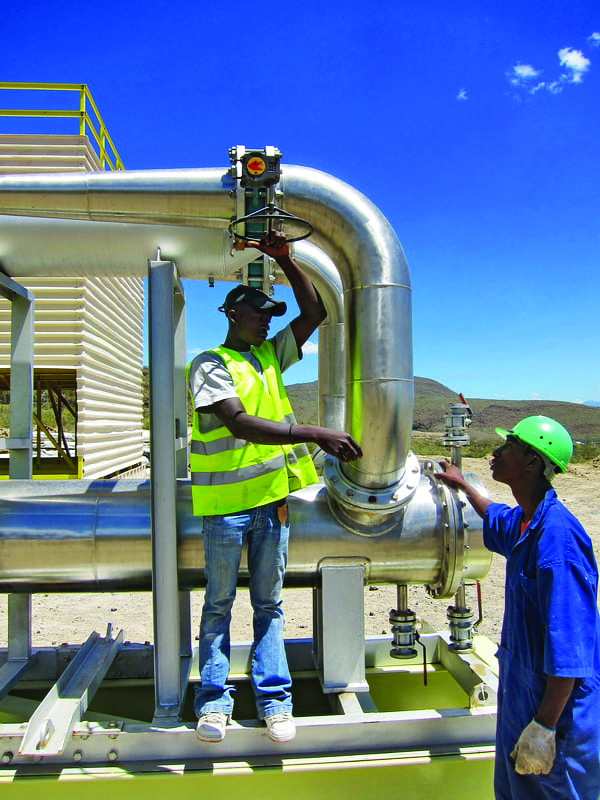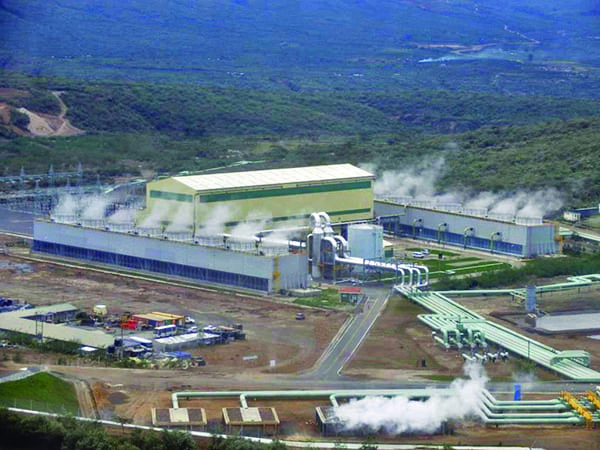Geothermal Generation Growing by Leaps and Bounds in Kenya
The Geothermal Resources Council, a California-based trade association, said Kenya ranks eighth in the world in geothermal energy production. And the country is poised to add substantially more geothermal-sourced power to its grid in the next few years, a trend noted in other countries trying to diversify their energy portfolios, and where geothermal potential exists.
The state-run Kenya Electricity Generating Co. (KenGen) in February announced it wants to add 1,745 MW of geothermal generation by 2025; by comparison, the country at present has installed total power generating capacity from all types of 2,370 MW. Most of that capacity—1,631 MW, of which 533 MW is geothermal (Figure 1)—is owned and operated by KenGen. The Kenyan government has a new energy policy that directs KenGen, along with the country’s independent power producers, to eliminate fossil fuel-powered generation; the Kenya Vision 2030 energy plan pushes for the majority of the country’s electricity to come from renewable sources, at utility scale, commercial and industrial scale, and as off-grid solutions, in 2030 and beyond.
“Going forward, the government policy, which all generators including KenGen and including independent power producers, is to eliminate generation from fossil fuels,” Moses Wekesa, the country’s business development director, said during a tour of KenGen’s geothermal plants in February. Electricity demand is growing in Kenya. The government expects year-over-year demand growth of about 8% over the next three years, then rising another 9% in 2021 before stabilizing at about 7% per year after that. Said Wekesa: “First, as a rule of thumb, your supply must always be ahead of demand. The reason being that it takes a while to put up a power plant.”
“The conditions in Kenya are ripe for geothermal development, with a supportive government, demonstrated history of successful projects, and a rapidly-growing economy hungry for cheap and reliable electricity,” said Andrew Palmateer, program director for the United States Energy Association, in a March interview with POWER. “As a clean, renewable, baseload electricity source, geothermal is well-positioned to increase its share of the electricity mix in Kenya.”
Other African nations, including Djibouti, Comoros, Eritrea, Tanzania, Uganda, and Rwanda, are exploring geothermal, and Ethiopia has about 7 MW of geothermal generation. A report from groups including the Infrastructure Consortium for Africa and the United Nations Environment Program says East Africa has the potential for 20,000 MW of geothermal, and Kenya is far and away the leading source. The country, which began developing geothermal power in the late 1970s, is part of a volcanic valley, and miles of pipes cross the landscape, carrying steam to power plants. Many of the pipes are elevated to enable vehicles to pass underneath, and to allow animals such as giraffes to travel unimpeded. About 47% of the country’s power today comes from geothermal, a total of about 630 MW, and about 400 MW of that has come online since 2014.
The country’s energy plan was developed with an eye toward servicing Kenya’s rapidly growing population, which today is about 49 million people, with expected growth to perhaps 90 million by 2050, according to the government—which also notes that only about 40% of the population has reliable electricity service. The country’s energy plan includes efforts to expand the national grid; Kenya Electricity Transmission Co. (Ketraco) said about 1,500 miles of new transmission lines are under construction, with plans for an additional 3,600 miles.
“The theoretical potential for geothermal energy capacity in Kenya is more than 10,000 MW, and in the Rift Valley alone, where most of the capacity is currently installed, the potential could be 2,000 MW,” Sanjay Chandra, director of clean energy development at business consultancy ICF, told POWER in a March interview. “With the recent announcements about Olkaria V [140 MW, Figure 2] and first phase of Menengai plant [105 MW], installed capacity continues to increase. The Eburru field is in the immediate pipeline for expansion, and explorations are ongoing in several other geothermal fields, including Longonot and Suswa. So, reaching 1,745 MW by 2025 is not impossible. Do keep in mind that a geothermal project has a long development cycle, given the time it takes for exploration, data collection, and engineering a site for generation. Getting requisite financing along the way adds to the timeline. It could take 10–15 years for a site to become a generation plant.”
Kenya’s economic growth depends on reliable energy. The country is the world’s fourth-largest exporter of cut flowers, and the largest exporter of flowers to Europe. Geothermal power is used to warm greenhouses; Oserian, one of the country’s largest flower companies, uses geothermal to power its operations near Lake Naivasha.
“Worldwide, geothermal is on an upward trend,” said Chandra. “Some 1,600 MW-plus of developing capacity was added in 2016 alone. Plants are being developed, and constructed, in Croatia, Iran, Malaysia, Indonesia, and Chile. [The] industry estimates that worldwide geothermal generation capacity will grow from the current 13.8 GW to over 23 GW by 2021. Upfront capital investment for development, time of development, and financing are the top challenges for geothermal development. Kenya is now seen as an international center of excellence and a model for geothermal energy.”
“Currently, geothermal accounts for less than 1% of total global electricity generation,” said Palmeteer. “Around the world, though, geothermal continues to grow as an electricity and primary energy source. Last year, Turkey joined the ‘1-Gigawatt Geothermal Club’ by commissioning two additional geothermal plants, and they have a large pipeline of upcoming projects. We have seen similar progress throughout Africa, Latin America, and Asia.
“In recent years, we have seen countries that are heavily reliant on large hydroelectric power, including Kenya, experiencing generation shortages during periods of drought. Water access issues in many parts of the world mean that large hydro will be more difficult to develop in the future. These generation shortages have cascading effects throughout the national economies, leading to millions of dollars in economic losses. To overcome these development challenges, I think it is important for countries to evaluate the costs and benefits of all energy sources from commercial, environmental, and operational perspectives, and then to pursue an energy mix that provides reliable, affordable, and clean energy access for all.”
—Darrell Proctor is a POWER associate editor.

